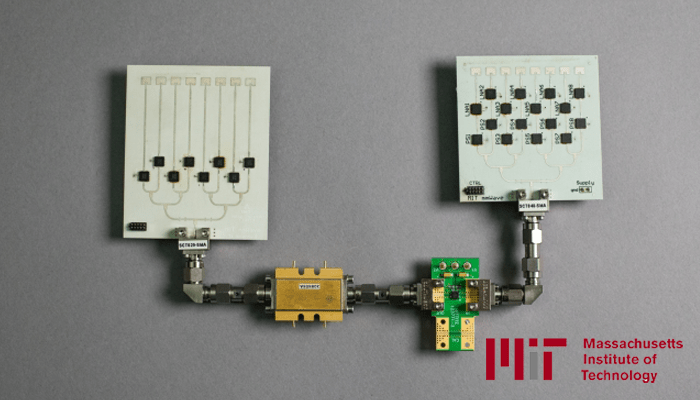According to a recent news post from MIT, researchers at the Computer Science and Artificial Intelligence Laboratory (CSAIL) have developed a prototype called “MoVR,” which can make and operate any wireless VR. The system uses special high-frequency radio signals called “millimeter waves” (mmWaves), that allow for the untethered transfer of multiple Gbps, or billions of bits per second.
“It’s very exciting to get a step closer to being able to deliver a high-resolution, wireless-VR experience,” said MIT professor Dina Katabi via the news post, whose research group has been working on the technology. “The ability to use a cordless headset really deepens the immersive experience of virtual reality and opens up a range of other applications.”
The MoVR technology uses programmable mirrors that detect the direction of incoming mmWave signals and can reconfigure themselves to reflect the signals to receivers on active headsets. According to PhD candidate Omid Abari, future versions of MoVR hardware could be as small as a smartphone and would allow for multiple active headsets inside a single playspace, without blocking each other’s signals.
How it works
One issue with existing wireless technologies like WiFi is that they can’t support advanced data processing.
“Replacing the HDMI cable with a wireless link is very challenging since we need to stream high-resolution multi-view video in real-time,” says Haitham Hassanieh, an assistant professor of electrical and computer engineering at the University of Illinois at Urbana Champaign who was not involved in the research. “This requires sustaining data rates of more than 6 Gbps while the user is moving and turning, which cannot be achieved by any of today’s systems.”
Since VR platforms have to work in real-time, systems also can’t use compression to accommodate lower data rates. This has led companies to make some pretty awkward attempts at untethered VR, like stuffing the equivalent of a full PC in your backpack.
The CSAIL team instead turned to mmWaves, which have promising applications for everything from high-speed Internet to cancer diagnosis. These high-frequency waves have one major downside, which is that they don’t work well with obstacles or reflections. If you want mmWaves to deliver constant connectivity for your VR game, you would need to always have a line of sight between transmitter and receiver. (The signal can be blocked even by just briefly moving your hand in front of the headset.)
To overcome this challenge, the team developed MoVR to act as a programmable mirror that detects the direction of the incoming mmWave signal and reconfigures itself to reflect it toward the receiver on the headset. MoVR can learn the correct signal direction to within two degrees, allowing it to correctly configure its angles.
“With a traditional mirror, light reflects off the mirror at the same angle as it arrives,” says Abari. “But with MoVR, angles can be specifically programmed so that the mirror receives the signal from the mmWave transmitter and reflects it towards the headset, regardless of its actual direction.”
Each MoVR device consists of two directional antennas that are each less than half the size of a credit card. The antennas use what are called “phased arrays” in order to focus signals into narrow beams that can be electronically steered at a timescale of microseconds.
Abari says that future versions of MoVR’s hardware could be as small as a smartphone, allowing for users to put several devices in a single room. This would enable multiple people to play a game at the same time without blocking each other’s signals.



